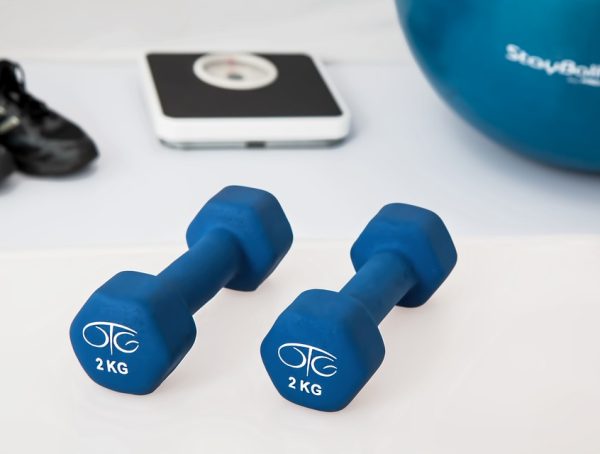10-Minute Low-Impact Exercise Routine for Seniors with Lower Back Pain
For many seniors, lower back pain is a common ailment that can hinder daily activities and reduce overall quality of life. While seeking medical help is essential, an effective way to manage this pain can be through a gentle, low-impact exercise routine specifically designed for seniors. This article presents a simple 10-minute low-impact exercise routine tailored to alleviate lower back pain, improve mobility, and enhance overall well-being.
Understanding Lower Back Pain
Lower back pain can stem from a variety of causes, including age-related degeneration, poor posture, lack of activity, or injuries. For seniors, it’s essential to maintain active lifestyles while being gentle on the back. Incorporating low-impact exercises not only helps reduce pain but also builds strength, flexibility, and encourages better posture.
10-Minute Low-Impact Exercise Routine
Before starting any exercise routine, consult your healthcare provider to ensure it’s safe for you.
Routine Breakdown
-
Warm-Up (2 minutes)
- Neck Rolls: Gently roll your head in a circle to release tension. Do this for 30 seconds in one direction and then switch.
- Shoulder Shrugs: Raise your shoulders towards your ears and hold for a second, then release. Repeat for 1 minute.
-
Pelvic Tilts (1 minute)
- Lie on your back with your knees bent and feet flat on the floor.
- Gently tilt your pelvis upward by pressing your lower back into the floor, then relax.
- Repeat for 1 minute, focusing on your breath and engaging your abdominal muscles.
-
Cat-Cow Stretch (2 minutes)
- Start on all fours with your wrists under your shoulders and knees under your hips.
- Inhale as you arch your back, dropping your belly (Cow). Exhale as you round your back, tucking your chin (Cat).
- Move slowly through these stretches for 2 minutes, synchronizing the movements with your breath.
-
Seated Leg Extensions (1 minute)
- Sit in a sturdy chair with your back straight.
- Extend your right leg forward, keeping it straight for a few seconds, then lower it back down.
- Alternate legs for 1 minute.
-
Standing Up and Sitting Down (1 minute)
- While sitting on the edge of a sturdy chair, stand up without using your hands.
- Then, sit back down gently.
- Repeat this motion for 1 minute, aiming for smooth, controlled movements.
-
Side Stretches (1 minute)
- Sit tall in your chair with your feet flat.
- Reach one arm overhead and lean to the opposite side. Hold for a few seconds, then switch sides.
- Repeat for 1 minute, focusing on elongating your spine and feeling the stretch along your side.
-
Seated Marching (1 minute)
- While seated, march your legs one at a time as if walking.
- Raise your knees high and swing your arms in conjunction.
- Continue marching for 1 minute, keeping your back straight and engaging your core.
- Cool Down (1 minute)
- Take a few deep breaths in a seated position, inhaling through your nose and exhaling through your mouth.
- Gently twist your torso to the right and hold for a few breaths, then switch to the left.
Action Steps for Readers
-
Create a Schedule: Plan to dedicate a specific time each day for this exercise routine. Consistency is key to seeing improvement in strength and pain relief.
-
Stay Hydrated: Drink water before and after your routine. Hydration is crucial for joint and muscle health.
-
Modify as Needed: If you experience discomfort or can’t perform specific movements, don’t hesitate to modify the exercises to suit your comfort level.
-
Track Your Progress: Keep a journal of your experiences. Note any changes in pain levels and improvements in mobility, mood, and overall well-being.
-
Incorporate Mobility into Daily Life: Look for opportunities to stay active throughout the day, whether it’s gentle stretching while watching TV or light walking in your neighborhood.
-
Share the Experience: Exercise can be more enjoyable with a buddy. Encourage a friend or family member to join you.
- Consult with a Professional: If your pain persists, consider speaking to a physical therapist or exercise specialist who can provide personalized guidance.
Conclusion
Incorporating a 10-minute low-impact exercise routine into your daily life can help manage lower back pain and improve flexibility and strength. Remember to pair your exercise efforts with an overall approach to health that includes nutrition, hydration, and mental well-being. Listen to your body, and remember that every small step you make contributes significantly to your health journey.
“The greatest wealth is health.” — Virgil
Implement this routine and other healthy habits into your life, and take your journey towards wellness one step at a time!
You might also like
More from Health and Fitness Tips and Advise for people 50+
RJ Mahvash Lavishes Praise On Yuzvendra Chahal Amid Dating Rumours, Calls Punjab Kings Player ‘Great, Most Caring Person’
Yuzvendra Chahal and RJ Mahvash have been rumoured to be dating shortly after the cricketer's divorce was finalised with …
Is being good with pets a green flag? Relationship expert shares how this may be the new love language
When you are on a dating app and swiping through profiles, have you come across one that …
Stebin Ben shuts down dating rumours with Nupur Sanon, says their bond is purely platonic: ‘Yes, I am single’ | Hindi Movie News
Singer Stebin Ben has officially addressed long-standing speculation about his relationship with Nupur Sanon, and fans hoping …


































